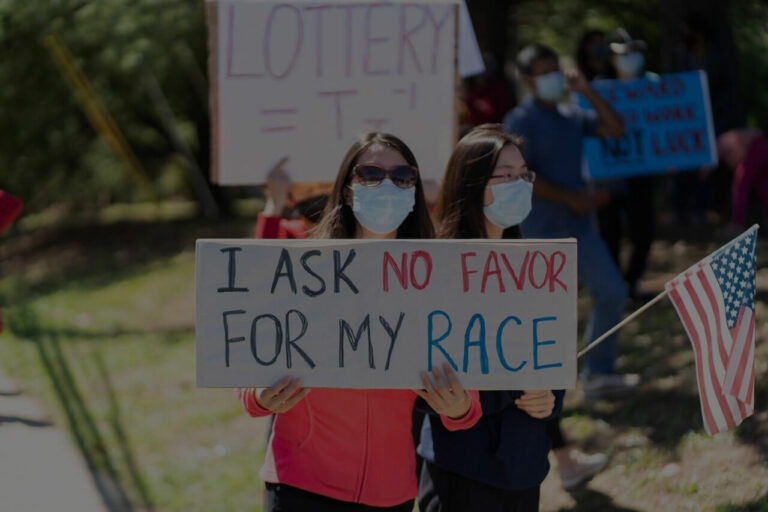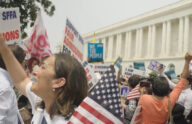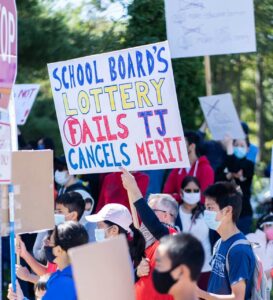Law & Liberty: Watchdog or Lapdog?

Taxpayers fund the bipartisan United States Commission on Civil Rights to be “a watchdog, not a lapdog” when overseeing other civil rights agencies, just as its former Chair, Mary Frances Berry, once said. Unfortunately, its most recent report—“The Federal Response to Anti-Asian Racism”—ignores decades of federal agencies turning a blind eye to anti-Asian discrimination in education. It is the product of a lapdog, not a watchdog.
Discrimination against Asian-American students in admissions at selective universities has been an open secret for decades. An entire cottage industry even coached ambitious applicants on how to be less Asian. Data produced in litigation showed that for applicants with academic credentials in the top 10 percent of Harvard’s pool, the odds of admission were 56.1 percent for African Americans, 31.3 percent for Hispanics, and 15.3 percent for whites, but only 12.6 percent for Asian Americans. In emails uncovered in the parallel lawsuit against the University of North Carolina, admissions officers were candid about preferring applicants of other races over Asian Americans. One representative exchange: “perfect 2400 SAT All 5 on AP one B in 11th” “Brown?!” “Heck no. Asian.”
Yet the federal agencies charged with enforcing civil rights laws prohibiting this discrimination largely have done nothing in response. These agencies could have issued guidance emphasizing that such discrimination is forbidden or pursued targeted investigations against universities widely suspected of discrimination. But they have not. The Department of Justice even filed an amicus brief supporting universities practicing discrimination in the Students for Fair Admissions cases in the Supreme Court, and the Solicitor General participated in oral arguments in support of the discriminating universities.
One exception exists: some now-replaced appointees in the Department of Justice’s Civil Rights Division opened investigations into anti-Asian admissions discrimination at several Ivy League colleges and ultimately sued Yale University. But the headwinds they faced show how entrenched willful blindness against anti-Asian discrimination is in federal civil rights enforcement.
Civil Rights Division career attorneys refused to work on these cases, forcing political appointees to take over line attorneys’ duties, and shortly after President Biden assumed office, the Civil Rights Division dropped the lawsuit against Yale. The nonprofit Students for Fair Admissions eventually brought and settled a similar case against Yale.
Selective public magnet schools also discriminate against Asian Americans. The Fairfax County School Board restructured its admissions process to lower the number of Asian Americans at Thomas Jefferson High School, a top science and technology magnet program. The Board did not hide its intent: litigation produced private text messages, stating “there has been an anti [A]sian feel underlying some of this, hate to say it lol” and that Asian students were “discriminated against in this process.” They lamented that “Asians hate us.”
Represented by my firm, Pacific Legal Foundation, a parent group called the Coalition for TJ fought back, claiming that the changes violated the Constitution. Their case is currently pending a writ of certiorari at the Supreme Court.
School officials in Boston, New York City, and Montgomery County, Maryland, have similarly revised admissions procedures to lower the numbers of Asian American students in magnet schools there. In Boston, school officials were even caught mocking Asian American surnames on a hot microphone. In each of these cities, parent groups have sued, represented by Pacific Legal Foundation. These cases are pending in the federal appellate courts.
Again, federal civil rights agencies could have opened targeted investigations into anti-Asian discrimination in any of these school districts. They could have issued guidance letters reminding school boards of their legal obligations. They have not. In Coalition for TJ v. Fairfax County School Board, the Department of Justice even filed an amicus brief in the Fourth Circuit supporting the discriminating school district. It is difficult to imagine a similarly indifferent federal response if school officials spoke about members of any other racial group the way Fairfax County and Boston officials talked about Asian-American students.
Congress created the Commission in 1957 as a fact-finding body. Although the extent of Southern states’ blatant discrimination against Blacks is well-recognized today, in the 1950s many Americans still denied that reality. The Commission’s careful reports established the pervasiveness of voting discrimination and laid important factual ground for the Voting Rights Act of 1965.
About twenty-five years later, the Commission’s future appeared in crisis when President Ronald Reagan fired Mary Frances Berry from the Commission. No one disputed that Reagan had the legal right to fire Berry. But a firing largely driven by philosophical differences (Reagan was conservative and Berry progressive) was perceived as undermining the Commission’s independence.
So Congress went back to the drawing board and in 1983, re-promulgated the statute authorizing the Commission. While it preserved the provisions enabling the Commission to investigate facts, it also added sections that prevented members from being fired arbitrarily in the interest of maintaining Commission independence.
Because the civil rights state had expanded considerably since 1957, Congress also gave the Commission oversight powers over federal civil rights enforcement. Notably, it required the Commission to publish at least one report about federal civil rights enforcement each fiscal year. Since then, Commission reports have been cited in Supreme Court opinions and in support of federal legislation and executive branch reforms.
The blatant anti-Asian discrimination in education fits squarely within these congressional mandates. Yet during the Civil Rights Commission’s oral briefing on this topic, Staff Director Mauro Morales attempted to shut down discussion of anti-Asian discrimination in education. When Glenn Magpantay, the only Asian American commissioner, tried to question a witness about the issue, Morales cut off his questioning by quickly rattling off a CFR number which he erroneously claimed limited the scope of Commissioner questions and witness testimony.
I used to be a special assistant and counsel to one member of the Commission (Gail Heriot, an Independent) for over a decade. Commissioners have broad discretion to question witnesses as they see fit. It is extraordinary for a Staff Director to interrupt a Commissioner’s line of questioning.
The staff-generated sections of the Commission’s final written report similarly omit any discussion of anti-Asian racism in education, despite being addressed in written testimony from witnesses like Eric Dreiband (former Assistant Attorney General for Civil Rights at the Department of Justice) and Devon Westhill (former Assistant Secretary for Civil Rights at the Department of Agriculture and now president and general counsel of the Center for Equal Opportunity).
Morales cited as purported authority for his decisions 45 C.F.R. 701.11, which gives the Chair broad authority to direct Commission meetings and briefings. That rule speaks only to the authority of the Commission’s Chair or acting Chair, which Morales was not (he is the Commission’s Staff Director; Commissioner Peter Kirsanow, the Commission’s most senior member, was then acting as Chair). While the Chair has discretionary authority to keep meetings focused and testimony on topic, the Commission had agreed that the briefing and eventual report would address anti-Asian racism broadly, including racism and discrimination in education. No Commission rule compelled shutting down this discussion.
The staff-written sections of the report focus on anti-Asian hate crime and anti-Asian hate incidents. Hate crime (and indeed all violent crime) is deplorable and should be prosecuted appropriately. And while every violent hate crime is a tragedy, violent hate crimes are also thankfully extremely rare. Defeating racism against Asian Americans also should entail attention to problems that don’t grab headlines, including discrimination in education that constrains future opportunities.
Some sections of the report also conflate true hate crime with the substantially less serious problem of “bias incidents,” some of which involve distasteful but constitutionally protected speech. Not only does the report seemingly encourage police departments to go after “bias incidents” instead of traditional crimes against property or persons, it also suggests that hate crime legislation should be expanded to reach non-criminal hate incidents—all of which threaten individual liberty.
The report further bizarrely makes much of occasional references to the “Wuhan virus” in the press during the early stages of the Covid-19 pandemic, when what to call the virus was still unsettled. Yes, it is possible to inflect “Wuhan virus” with a nasty or racist tone, and using that term after others became more standard might also suggest discriminatory intent. But dozens of diseases are named after their place of origin. It’s also odd to focus on nomenclature while ignoring pervasive discrimination in education.
The best-known book about the Civil Rights Commission’s history and mission is titled And Justice for All. “For all” means “for all.” The Commission is supposed to uphold the principle that all individuals should be treated as individuals and not discriminated against based on their race. It is not supposed to ignore racial discrimination when ideologically or politically inconvenient.
Eliminating race discrimination means eliminating all of it, just as Chief Justice Roberts wrote in his recent Students for Fair Admissions majority opinion. The Civil Rights Commission report should have reminded other civil federal agencies of their obligations to end race discrimination in education against Asian Americans. It’s regrettable that this once-venerated watchdog agency has become a lapdog to progressive coalition politics.
This op-ed was originally published at Law & Liberty on November 29, 2023.








